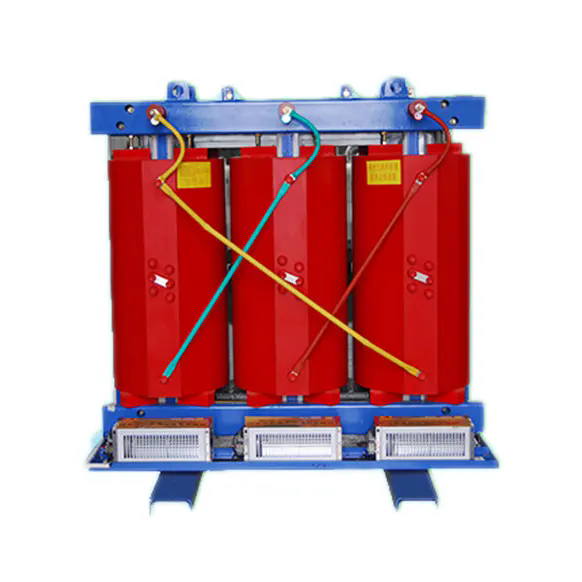What Is a Dry-Type Transformer and How Does It Benefit Modern Power Systems?
2025-01-06
In the world of electrical engineering, transformers play a vital role in the transmission and distribution of electrical power. One type of transformer that is gaining increasing attention for its reliability and safety is the dry-type transformer. But what exactly is a dry-type transformer, and how does it benefit modern power systems?
In this blog, we’ll explore the functionality, advantages, and applications of dry-type transformers, as well as why they are becoming a preferred choice for various electrical systems.
What Is a Dry-Type Transformer?
A dry-type transformer is a type of transformer that does not use liquid coolant (such as oil) for insulation. Instead, it relies on solid insulation materials—typically epoxy resin or other non-flammable materials—to insulate the windings and provide cooling. These transformers are designed to operate safely and efficiently in environments where oil-filled transformers might pose safety or environmental concerns.
The main difference between a dry-type transformer and its oil-filled counterpart is the cooling method. Oil-filled transformers use oil as both an insulating material and a coolant, whereas dry-type transformers utilize air or natural convection to dissipate heat. Because dry-type transformers don’t contain oil, they eliminate the risk of oil leakage, making them safer for use in sensitive areas such as schools, hospitals, and commercial buildings.
How Does a Dry-Type Transformer Work?
Like all transformers, a dry-type transformer operates on the principle of electromagnetic induction. The transformer consists of two main components: the primary winding (where the input electrical current is applied) and the secondary winding (where the output electrical current is drawn). These windings are made of copper or aluminum wire and are wrapped around a core made of laminated steel to enhance efficiency.
In operation, alternating current (AC) flows through the primary winding, generating a magnetic field. This magnetic field induces a current in the secondary winding, which produces the transformed voltage. The dry-type transformer uses air or solid insulation materials around the windings to prevent electrical short circuits and manage heat dissipation.
Heat generated during the transformer’s operation is typically dissipated through natural convection or forced air cooling. In some designs, fans or ventilation systems may be used to enhance the cooling process. The insulation materials in dry-type transformers are designed to withstand high temperatures and maintain their integrity over time.
Advantages of Dry-Type Transformers
Dry-type transformers offer a variety of advantages, making them suitable for specific applications where safety, reliability, and environmental considerations are paramount. Some of the key benefits include:
1. Safety:
Since dry-type transformers do not use oil, there is no risk of oil leakage or fire. This makes them a safer option in environments where fire hazards or environmental contamination must be minimized. The solid insulation used in dry-type transformers is non-flammable and resistant to electrical faults, which adds an extra layer of safety.
2. Environmentally Friendly:
Dry-type transformers are more eco-friendly compared to their oil-filled counterparts. Without the use of oil, they eliminate the risk of oil spills or leaks, which can be harmful to the environment. This makes dry-type transformers a better choice for installations near sensitive ecosystems, water bodies, or places where environmental regulations are strict.
3. Lower Maintenance:
Because there is no oil to monitor or replace, dry-type transformers require less maintenance. The absence of oil also reduces the need for oil testing and the associated costs. Additionally, solid insulation materials are less likely to degrade over time compared to oil, which can be affected by contaminants and moisture.
4. Compact and Lightweight:
Dry-type transformers tend to be more compact and lighter than oil-filled transformers. This makes them easier to install in spaces with limited room and reduces transportation costs. Their smaller size is especially beneficial in urban settings or locations with space constraints.
5. No Risk of Toxic Leaks:
One of the significant concerns with oil-filled transformers is the risk of toxic leaks. In the event of a transformer failure, the oil can leak and potentially cause harm to nearby people, animals, or plants. Dry-type transformers eliminate this risk entirely, as they do not rely on oil as a coolant or insulator.
6. Ideal for Indoor Use:
Dry-type transformers are particularly suitable for indoor installations where oil-filled transformers might be too risky or impractical. They are often used in commercial buildings, industrial facilities, and areas with strict fire regulations, as they do not require special containment measures for oil storage.
Applications of Dry-Type Transformers
Dry-type transformers are used in various applications, particularly where safety, space, and environmental considerations are important. Some common areas where dry-type transformers are employed include:
1. Commercial and Residential Buildings:
Dry-type transformers are widely used in commercial and residential buildings to step down the voltage from the utility to a usable level for lighting, HVAC systems, and other electrical equipment.
2. Industrial Applications:
In factories and manufacturing plants, dry-type transformers are used to power heavy machinery and equipment. Their compact size and reliability make them ideal for environments where maintenance and safety are critical.
3. Renewable Energy Systems:
With the rise of renewable energy sources such as solar and wind power, dry-type transformers are increasingly used to integrate power generated by these sources into the grid. They are well-suited for renewable energy installations because of their environmental benefits and ease of maintenance.
4. Mining and Oil & Gas Industries:
In industries like mining, oil, and gas, where flammable or hazardous conditions are common, dry-type transformers provide a safer alternative to oil-filled transformers. They are used to supply power to remote locations or operations where safety is a top concern.
5. Public Infrastructure:
Dry-type transformers are often found in public infrastructure, such as hospitals, schools, airports, and government buildings. The safety and reliability of these transformers make them an ideal choice for critical services where power reliability and safety are paramount.
6. Transportation Systems:
Urban transportation systems, including subways, light rail, and tram networks, rely on dry-type transformers to supply power to their electrical systems. These systems benefit from the transformer’s compact size and safety features.
Challenges and Limitations of Dry-Type Transformers
While dry-type transformers offer numerous benefits, they do have a few limitations:
1. Lower Efficiency for Larger Loads:
Dry-type transformers tend to be less efficient than oil-filled transformers, especially when dealing with larger electrical loads. Oil-filled transformers have better heat dissipation properties, which can help them handle higher loads more efficiently.
2. Higher Initial Cost:
Dry-type transformers can be more expensive than oil-filled transformers, especially for larger capacities. However, the lower maintenance costs and safety advantages can offset the initial cost over the long term.
3. Limited Power Ratings:
Dry-type transformers are generally more suitable for lower power ratings. While they can handle a wide range of applications, they are not always ideal for extremely high power requirements, such as in large-scale industrial operations or electrical substations.
Conclusion: The Future of Dry-Type Transformers
Dry-type transformers represent a critical advancement in the field of electrical engineering, providing a safer, environmentally friendly, and low-maintenance alternative to traditional oil-filled transformers. While they may have limitations when it comes to handling extremely high loads, their benefits in terms of safety, environmental impact, and ease of maintenance make them an excellent choice for many modern power systems.
As industries and municipalities continue to prioritize sustainability, safety, and reliability, dry-type transformers are expected to play an increasingly important role in powering our homes, businesses, and infrastructure. With their compact design and growing efficiency, these transformers are poised to be a cornerstone of the electrical grid in the years to come.



